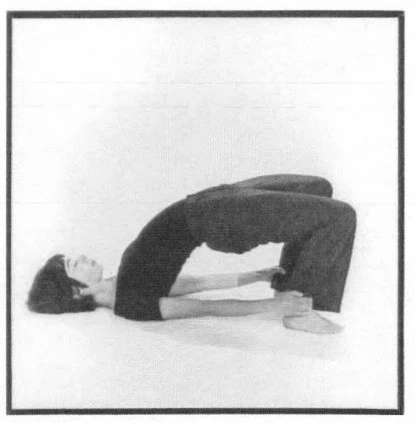
Pelvic pain and tension are very common ailments, since the pelvis is exposed to a great deal of stress and thus easily accumulates tension. It is important, therefore, to practice techniques which help release tension from the pelvis if you want to improve your strength, flexibility, and overall balance.
On this page, you’ll find extensive information about pelvic tension, including what conditions contribute to it, and an Acu-Yoga exercise to relieve it.
Pelvis Shock Absorber
The pelvis connects the upper and lower body and supports the weight of the upper body on the legs. The pelvis also acts as a body shock absorber for the spine, protecting the spine and upper body from the impact of the body weight. This body core structure is especially true during walking and running.
The design of the pelvis provides for a great range of body movement. Importantly, the overall posture of the body is determined by the position of the pelvis. Therefore, when the pelvis is pulled out of place, pelvic tension and pain can result and effect the whole body.
Conversely, if the posture of another part of the body is poor, the pelvis cannot properly do its job as part of the body core distributing the body's weight. Muscle strain and pelvic joint tension can be the result of poor posture or stress.
There are many important muscles, tendons, ligaments, nerves, arteries, and lymph nodes in this area. Approximately 36 muscles attach to the pelvis. They act together to stabilize the pelvic girdle in relation to the spine.
When all of the neuro-muscular components work together harmoniously, they contribute to the optimum condition of the body core in general. However, because there is so much going on within this one area, it is all too common for there to be pelvic blockages, instead of balance.

The Pelvic Meridians
Many meridians run through the relatively small groin area in the front of the pelvic girdle. They are the Stomach, Spleen, Kidney, and Liver Meridians.
In some places, these meridians are not only close together, but actually cross over each other. In addition, the Gall Bladder Meridian runs over the side of the pelvic area, and the Bladder Meridian runs through the back.
Because of all this activity, pelvic blockages and tension can accumulate around key Acupressure points on these meridians. This is especially true in the area where the top of the thighbone is inserted into the hip socket of the pelvis. Over time, blockages in the meridians can cause physical problems.
Effects on Pelvic Organs
Tension in the pelvis directly affects the reproductive and digestive organs. When the muscles and meridians of the pelvic area are tense or stagnated, the colon can become blocked.
Also, the circulation of both blood and nervous system impulses to the genitals is reduced. For the sexual sensations to be as full as possible, the pelvic area must be flexible.
Pelvic Tension Conditions
Important issues are: restrictive clothing, poor posture and lack of movement, chest and shoulder tension, and emotional stresses, especially frustration and sexual repressions. All of these concerns add up to a cultural pattern of pelvic and abdominal tension.
This hinders the development of us all. The pelvis is a key area of blockage that’s important to focus on when you’re working to balance yourself overall. You’ll feel better once you begin to make healthier, more positive habits.
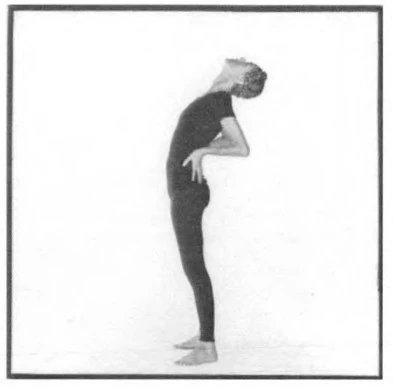
Restrictive Clothing
Fashion strongly influences how we carry ourselves, which unfortunately is usually in an unhealthy way. For example, it is fashionable to appear slim. This can result in a lot of pelvic and abdominal tension, as people tighten their stomachs in an attempt to meet the fashion “ideal.”
Girdles were created for this very purpose. Tight pants and other tapered clothes, which are cut to bring out this slim look, add to the problem. The result is tension, decreased flexibility and mobility of the pelvis, and impaired functioning of the pelvic organs.
Better choices are clothing that is comfortable, that fits without being too tight. This can still be fashionable and attractive!
Poor Posture & Lack of Movement
The pelvis is designed to be the body's core and move in all directions. However, many people have a sedentary lifestyle, in which sitting at desks, riding in cars, and waiting in lines is a common routine. These behaviors stagnate the body, since it does not have an opportunity to be fully moved and stretched.
A lack of movement becomes a permanent pattern. Then tension builds, and the area becomes more and more tight and congested. Thus, the posture of the entire body is poor, with the entire skeletal frame being thrown out of position.
Few people have fluid, strong posture. It’s easy to see that many people have their shoulders hunched up and their knees locked. The result is their pelvises protrude backward, producing a swayback.
Under the brunt of this bad posture, the pelvis becomes rigid, almost locked into one position. This impairs circulation, weakens genital functioning, and can cause constipation, lumbago, sciatica, and impotency.
You can consciously practice standing up straighter and lifting your head up a few times throughout the day. Over time, it will become second nature.
You can also begin to move more, by taking short breaks once an hour to stand up and stretch for a few minutes. If you haven’t been exercising, you can start simply by walking five or ten minutes a day. Go at the rate that’s right for you, and slowly add more time.
Chest & Shoulder Tension
There is a direct relationship between body core tension in the upper and lower portions of the spine. When one is out of proper alignment, a strain is put on the other to compensate. You then end up with tension and poor alignment in both areas.
Since most people are more aware of their shoulder tension than their pelvic tension, it is important to work on the pelvis. This helps to cultivate an awareness of the tension stored there. Then a person can realize where the energies are blocked or stagnated.
The depth of the breath is also a barometer for pelvic tension. The breathing cannot be full and deep if there is tension in the chest or the abdomen.
Practice deep breathing, so that you fully expand your lungs. This will help you release chest and shoulder tension and relax more fully.
Core Pelvic Emotions
The pelvis is also considered the gate of the abdomen, where we experience our “gut level” core feelings. Abdominal tensions can block off a deeper level of your intuition. The result is that we tend to lose touch with our true needs and desires.
Frustrations
Our emotions and their expressions are inhibited by tensions and repressions. This, of course, results in frustration, since no matter what we do, our deep needs remain unmet.
Many people are stuck in this frustration. The substitute “gratifications” they use, in an attempt to relieve this frustration, are destructive habits. Examples are smoking, drinking, drugs, overeating, or eating non-nutritional foods solely for taste or sensation.
These habits not only do not satisfy the person, they weaken and toxify the body. This makes the true satisfaction of health and openness more and more elusive.
Healing the Pelvis
The flip side of this negative situation is one where pelvic tensions, and their associated emotions, are gradually released in a balanced way. Releasing pelvic tension can enable a person to liberate themselves from anxiety, worry, and fear, and to more fully experience inner gratification. It’s how we move forward in life.
To experience these benefits, practice the Acu-Yoga exercise below, which is specifically for releasing pelvic tension.
Sexual Repressions & Problems
Culturally, we are taught to block the sexual feelings of our genitals. The “don’t touch – bad boy/girl!” is hardly conducive to a healthy, relaxed pelvis. In addition, parental admonitions needn’t be so outspoken to still have a powerful inhibiting effect. Difficult or stressful experiences in toilet training can also have a similar result.
This closing down of the natural mobility and feeling in the pelvic area is accomplished by tightening the muscles of the pelvic region. The outcome is to dull and deaden sensation and to repress sexual feelings.
A number of problems can eventually result from the imbalances caused by pelvic blockages. Examples are impotency, lack of sexual drive, weak erection, premature ejaculation, vaginal infections, and menstrual cramps.
Even if the condition does not degenerate to this point, the reproductive organs can still be weakened by pelvic tension. In this case, orgasm often serves as a temporary release of stress.
Healthy Pelvic Sensations
When tension in the pelvic region is released, it is possible to experience a depth of feeling that was previously impossible. When this area is free, loose, and open, pleasurable sensations can circulate in a deep and satisfying way.
Sexual Pleasure & Intimacy — one of the many benefits of Acupressure — has both a video and book on Acupressure for Lovers. Explore the
Sexuality & Intimacy topic to learn more about Acupressure and sexuality.
Acu-Yoga Releases Pelvic Tension
The following Acu-Yoga exercise, Locust Pose, works on the Acupressure points in this area. It can increase the blood supply and sensory impulses to the entire pelvic region.
Locust Pose is an excellent example of the way in which the traditional Yogic postures utilize Acupressure, since pressure is directly put on specific Acupressure points in the groin area.
This pose works to unblock muscular tensions in the lower back, groin, genital, and abdominal regions. Daily practice can improve posture, elimination, menstrual disorders, potency, and other sexually-related problems.
Acu-Yoga Pelvic Exercise Locust Pose
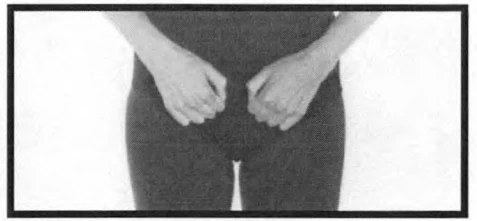
1. Lie down on your stomach with your feet together. Rest your head on either your chin or your forehead.
2. Make your hands into fists, and put them under your hips so that they fit inside the front hip bones near the groin.
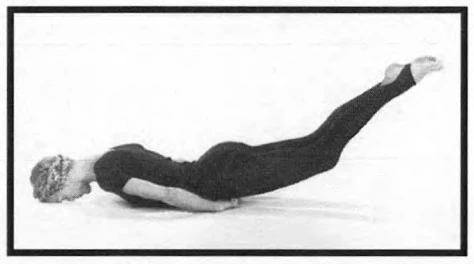
3. Inhale deeply, lifting your legs as high as possible, keeping the legs straight and the feet together.
4. Keep your legs up and breathe deeply into your Second Chakra (lower abdomen) for about 30 seconds.
5. Inhale deeply and raise the legs up further, then hold for 10 seconds.
6. Lower your legs, move your arms by your sides, turn your head to the side, and completely relax.
Benefits: the genital and abdominal regions, frustration, groin pains, constipation, digestive problems, cold feet
Acupressure Pelvic Points and Traditional Associations
- Spleen 12 (Sp 12) — Abdominal pain or swelling
- Spleen 13 (Sp 13) — Pain in buttocks, hernia, indigestion
- Stomach 29 (St 29) — Genital balancing
- Stomach 30 (St 30) — Sexual potency
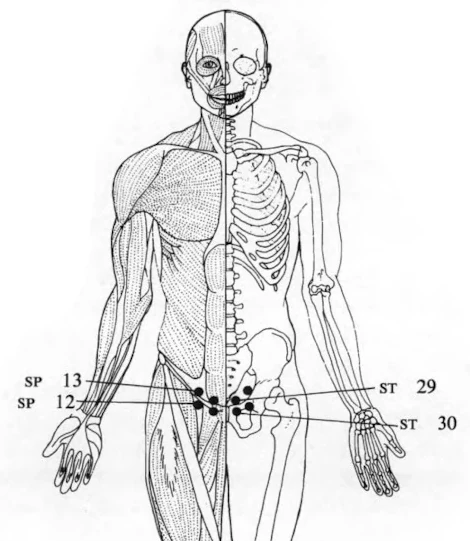






 DVD • Download • Rent
DVD • Download • Rent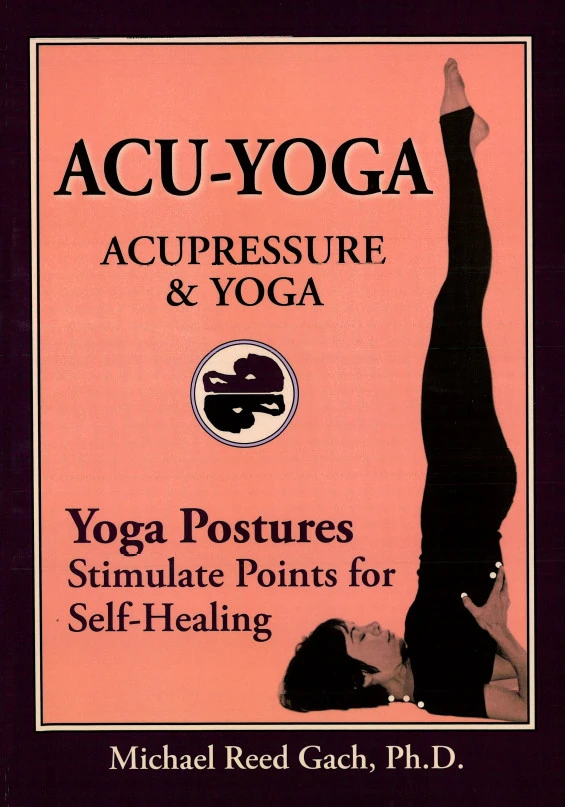 Book Details
Book Details